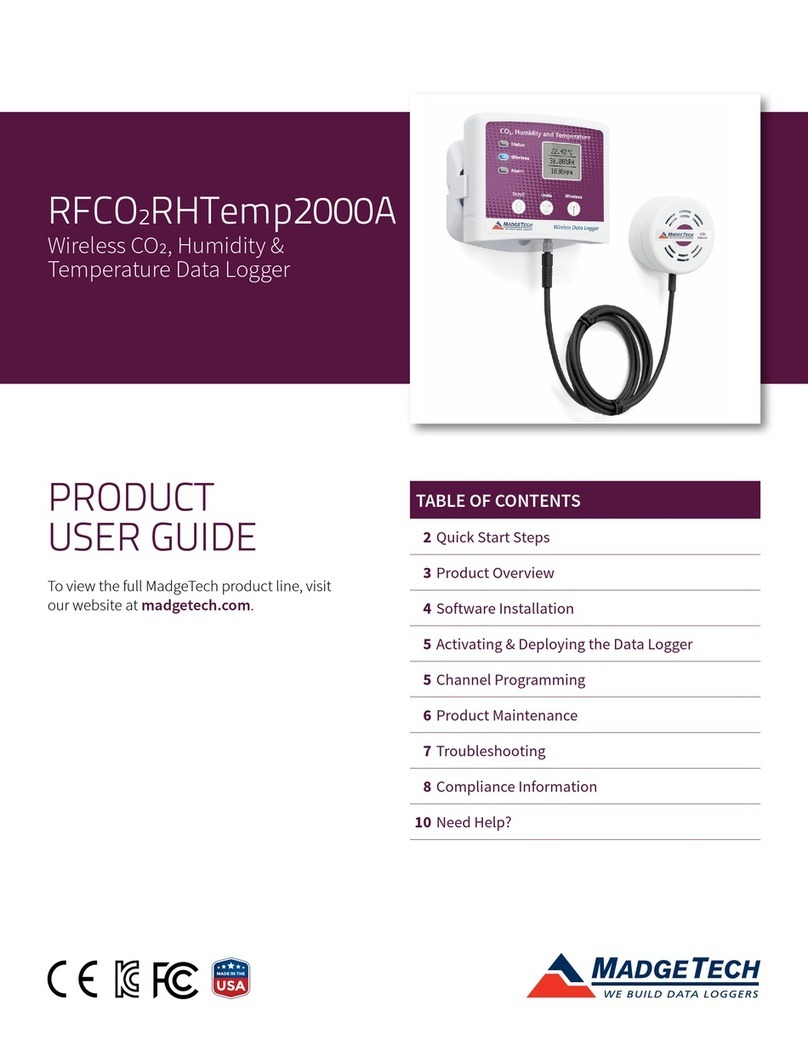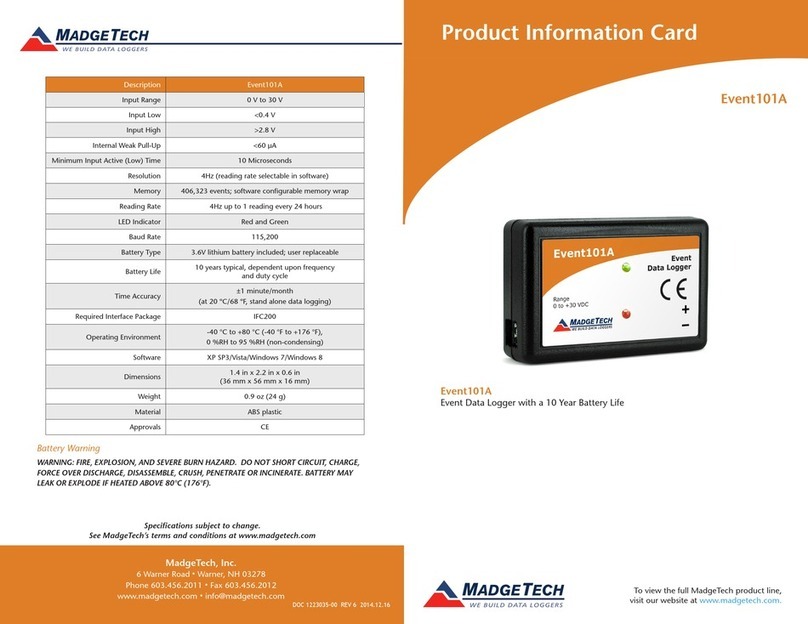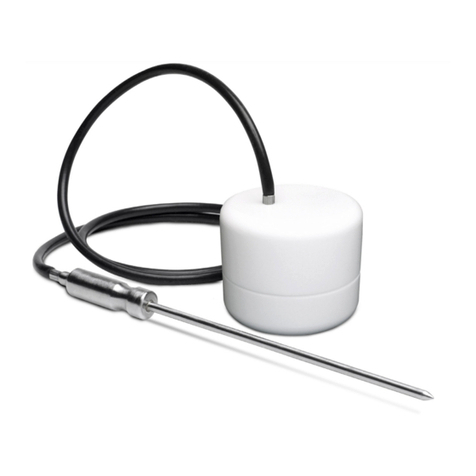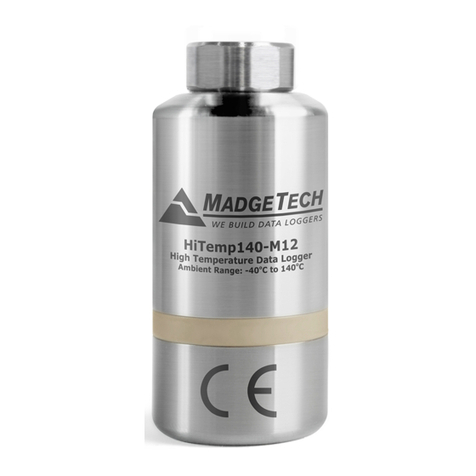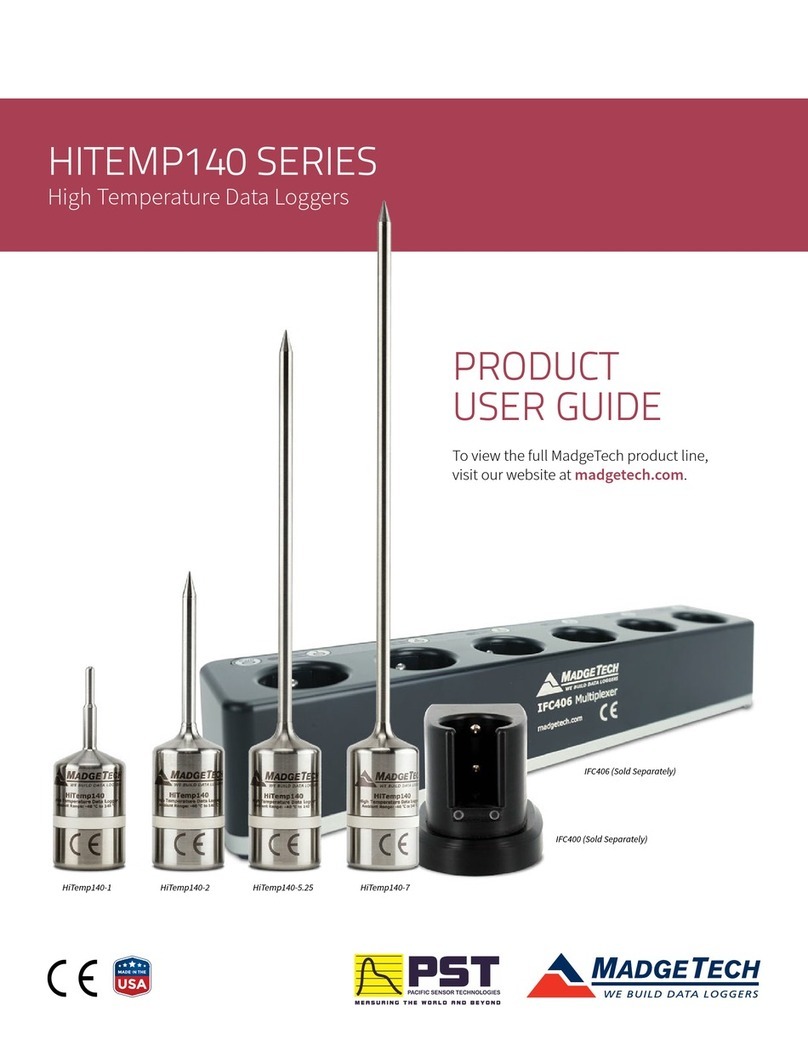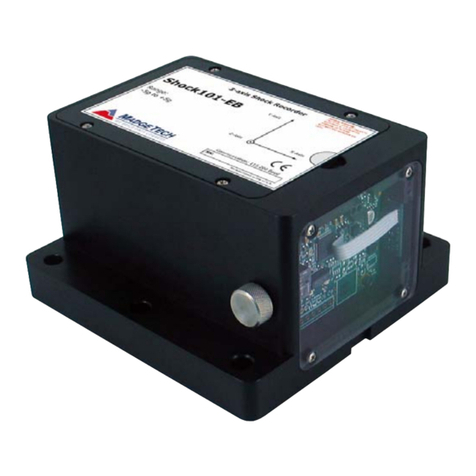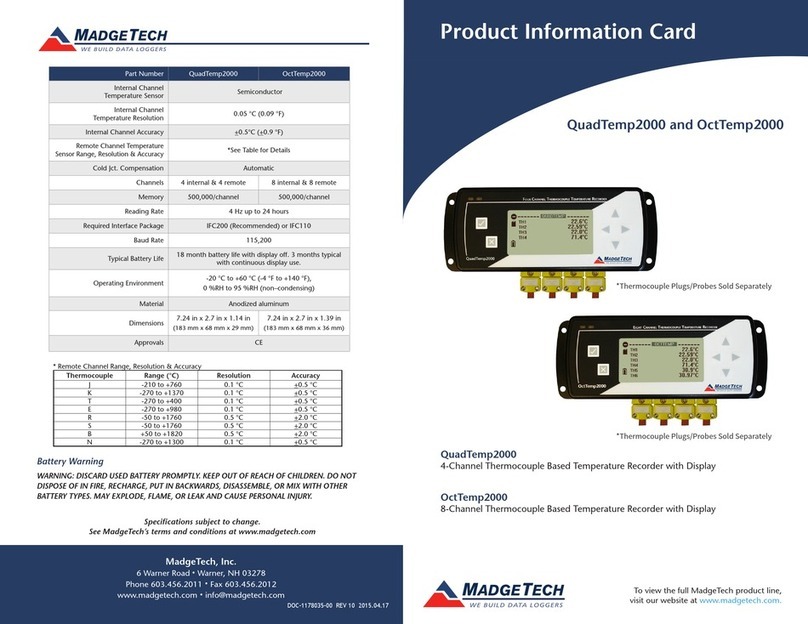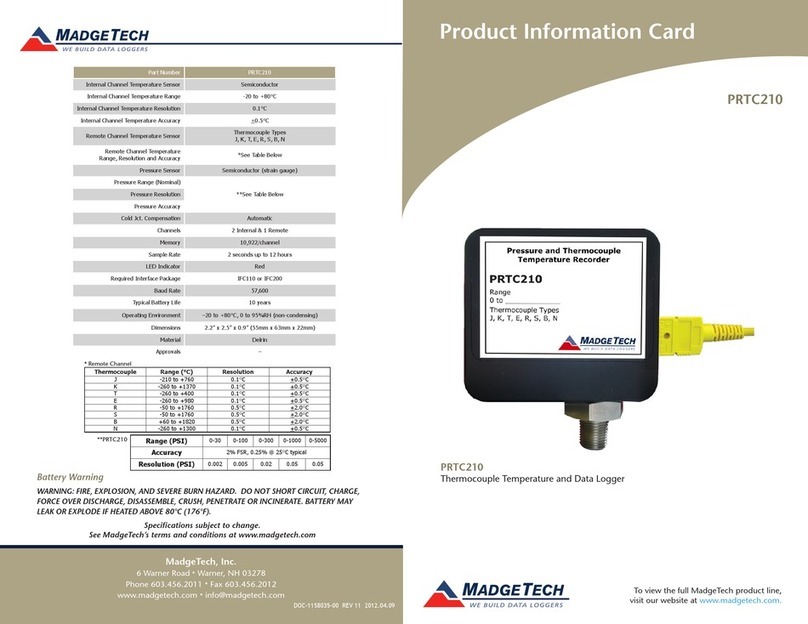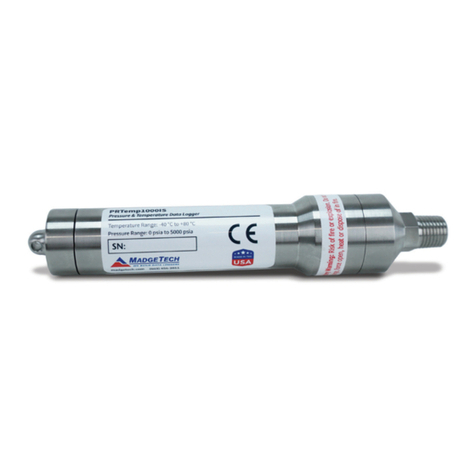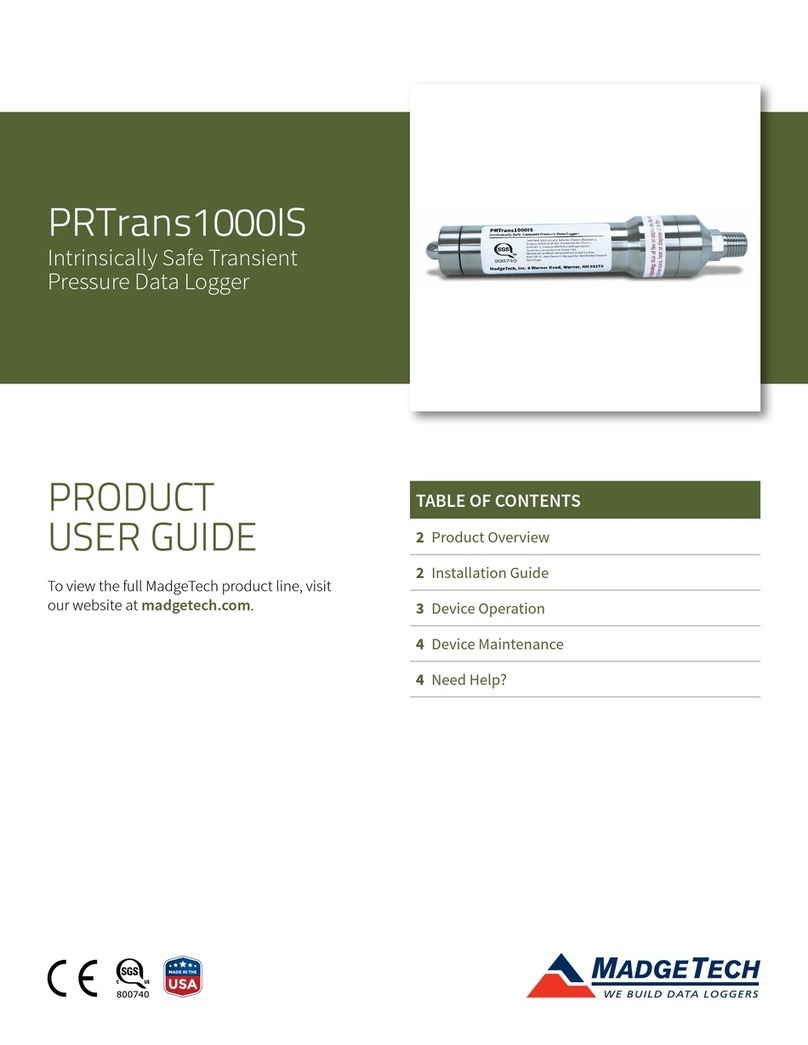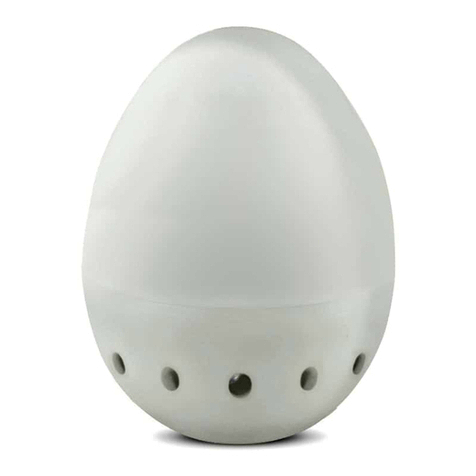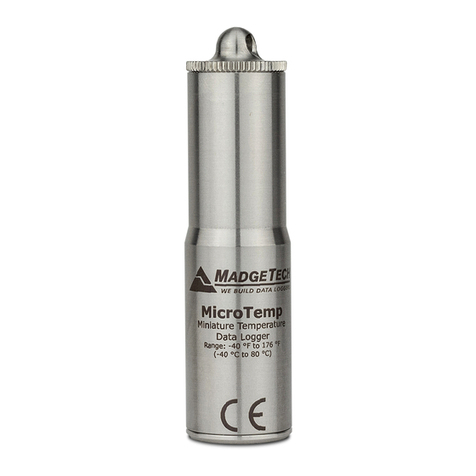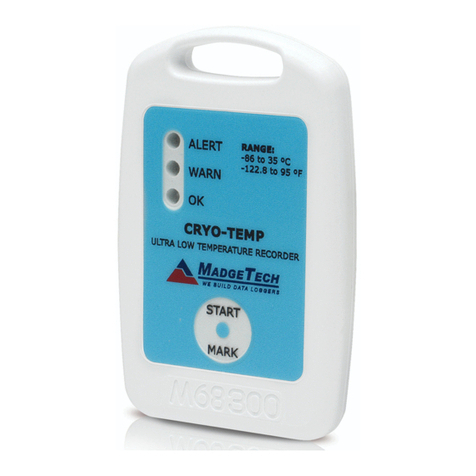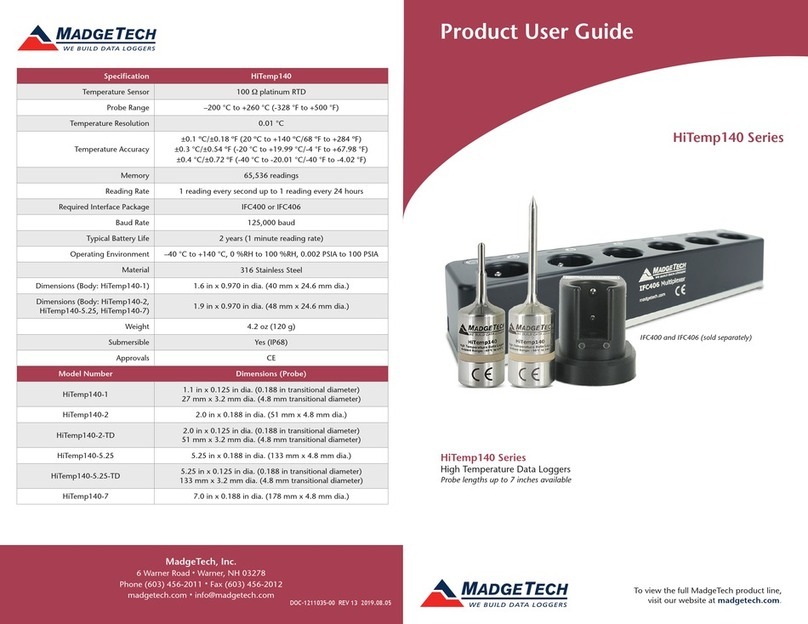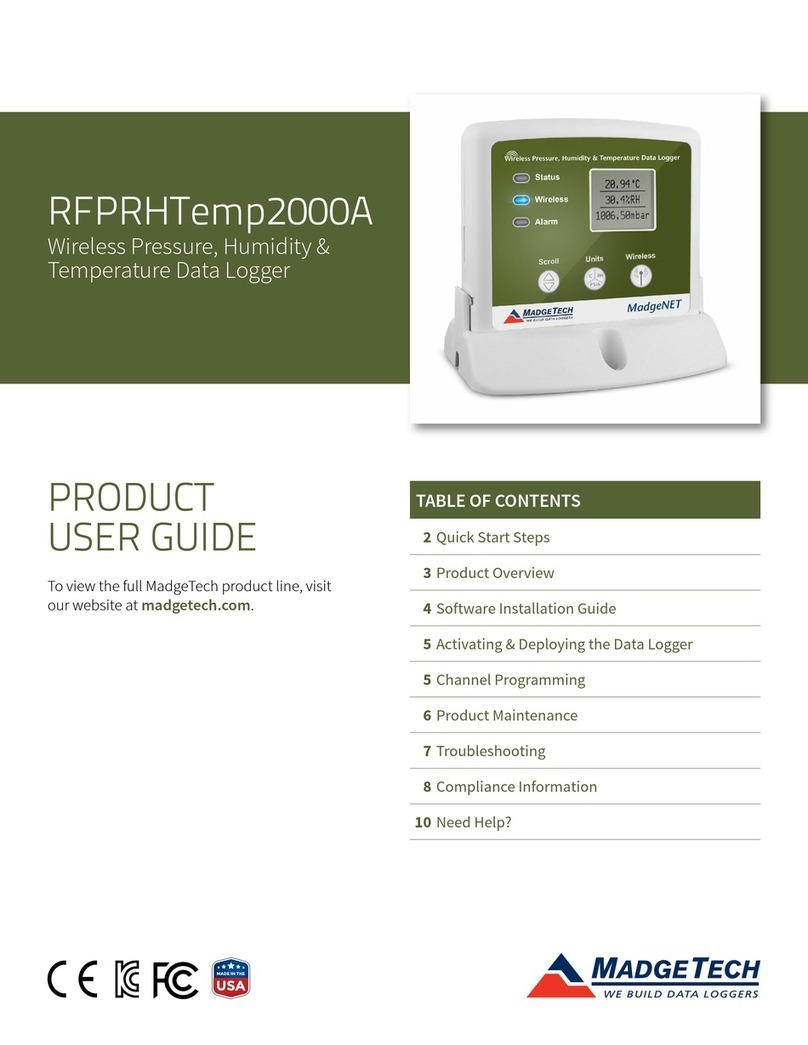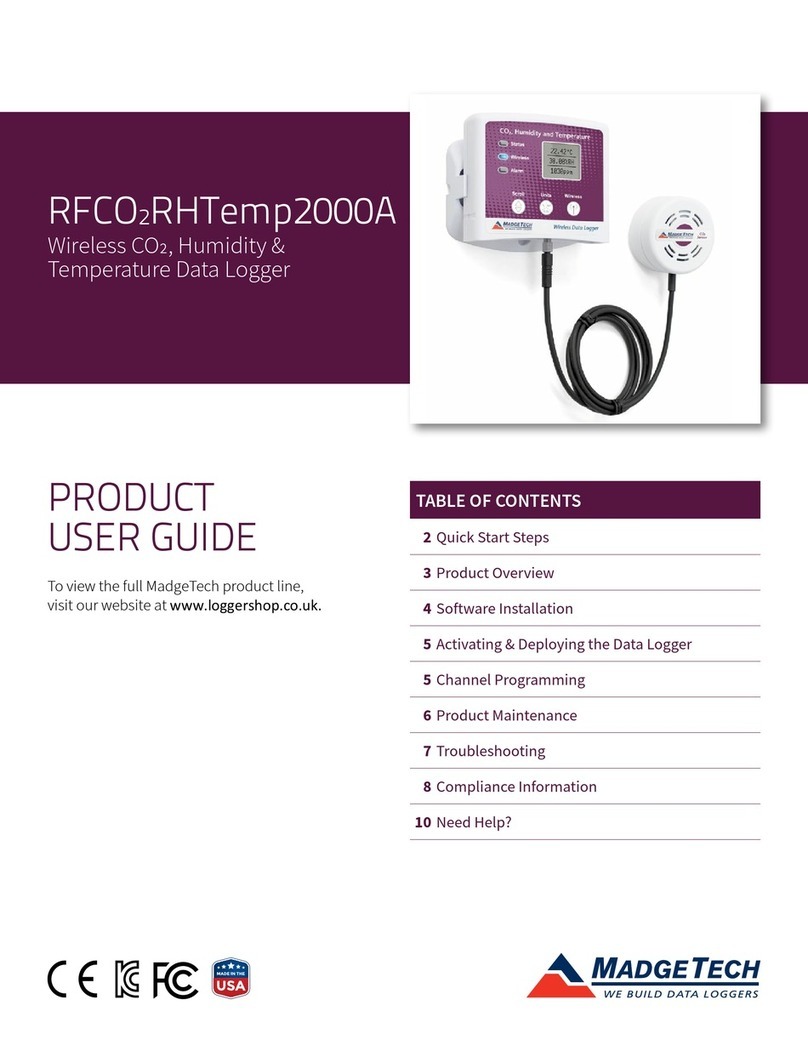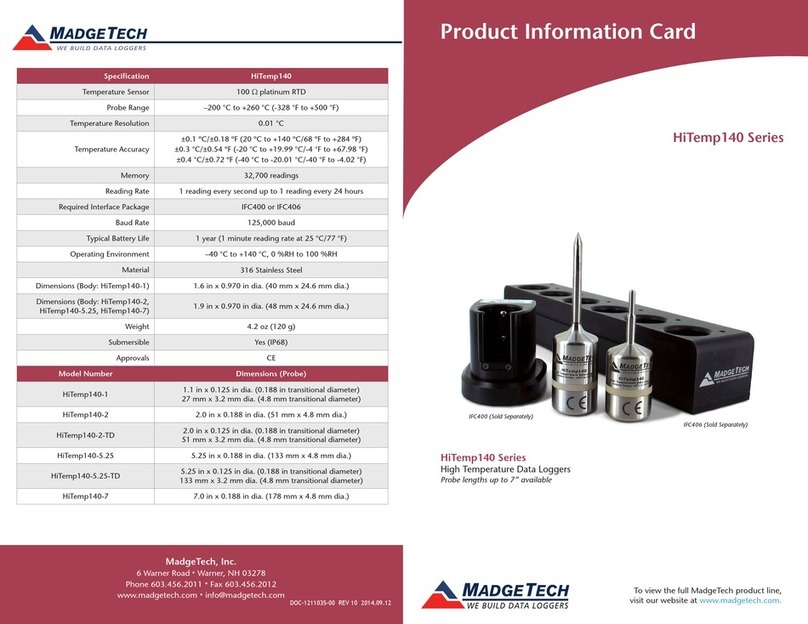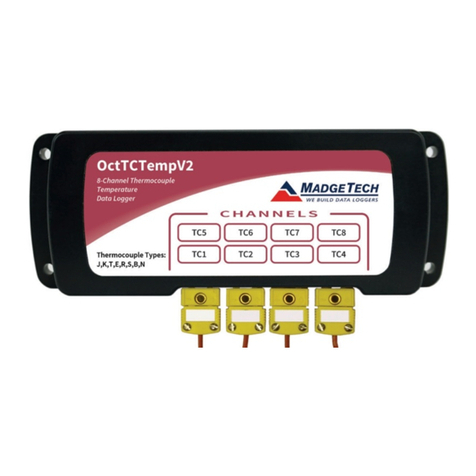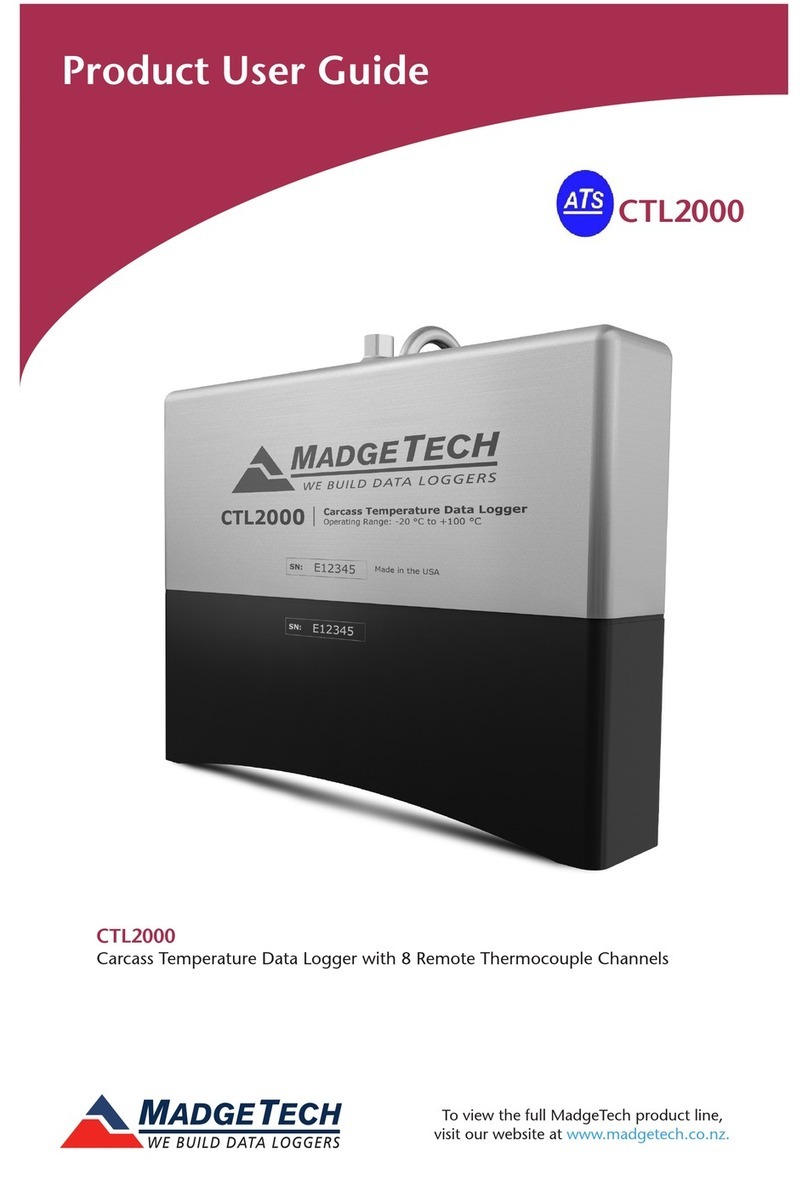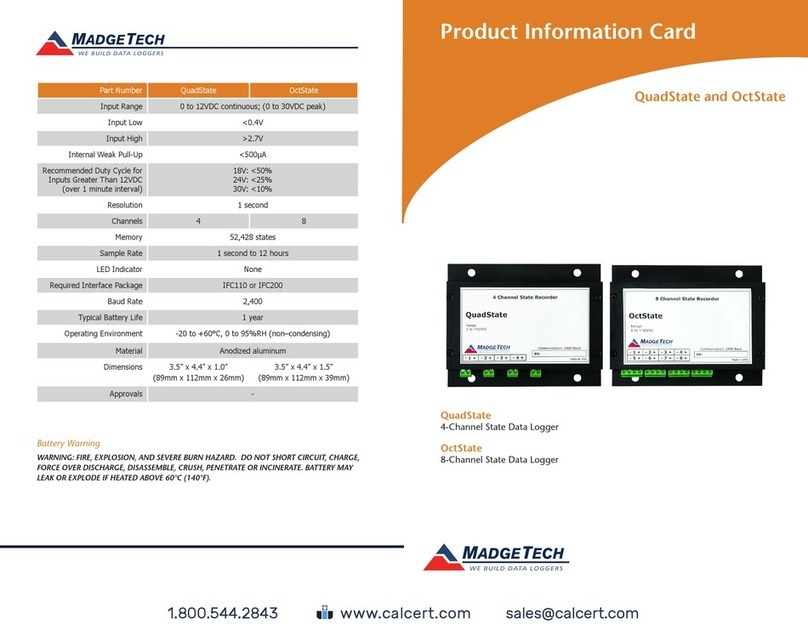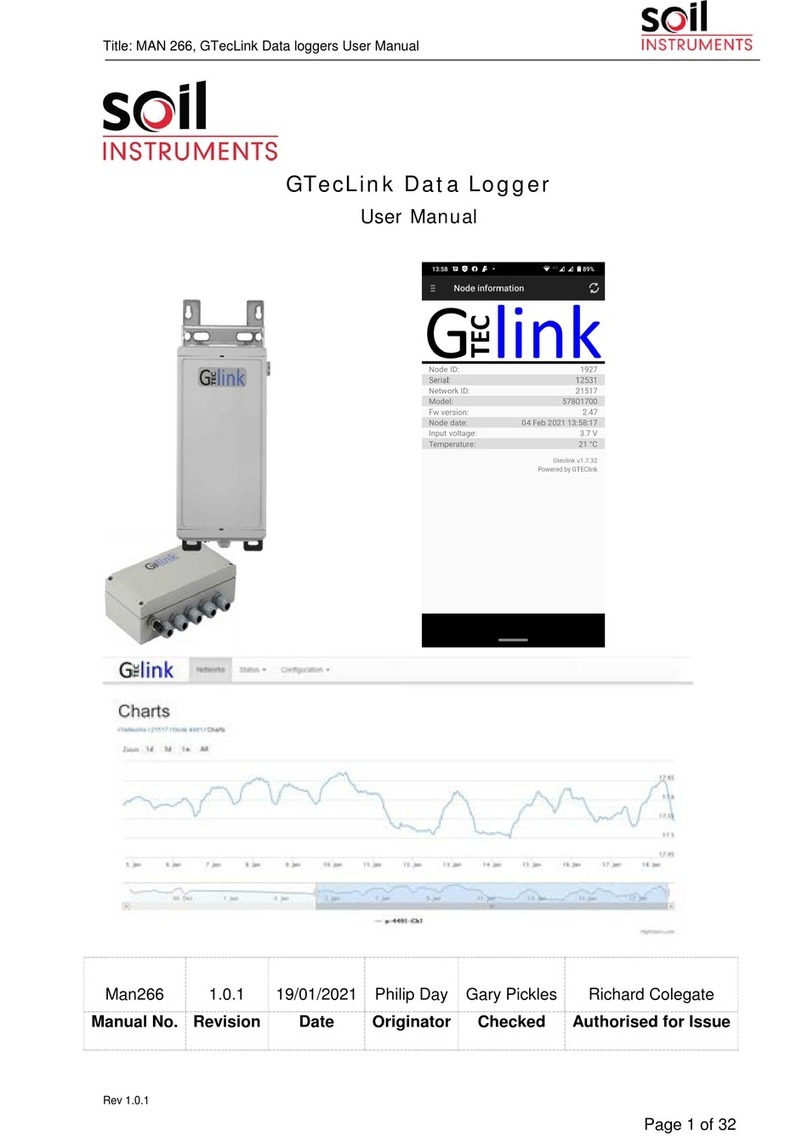
Product Notes
The RTDTemp2000 is precision RTD-based temperature data logger with LCD display. The
convenient LCD provides access to the current temperature reading, as well as minimum,
maximum and average statistics.
Backlight
The backlight uses a significant amount of battery life. Refer to the manual to configure the
auto shut-off when not in use.
Set Password
To password protect the device so that others cannot start, stop or reset the device;
- Click Identify Device and Read Status, then select the Device Detail Tab.
- Choose Set Password.
- Enter and confirm the password and click OK
Wiring the Data Logger
Wiring Options
For 4-wire RTD probes, connect the four lead wires to your RTD
logger as shown in the figures below.
For 3-wire RTD probes, short inputs 3 and 4
together, then connect the lead wires to inputs 1,
2 and 3.
For 2-wire RTD probes, short inputs 3 and 4 together
and inputs 1 and 2 together, then connect the RTD
lead wires to inputs 2 and 3.
Warning: Note the polarity instructions. Do not attach wires to the wrong terminals.
100 Ohm, 2 or 4 wire RTD probes are recommended for the most accurate performance.
Most 100 Ohm, 3 wire RTD probes will work, but MadgeTech cannot guarantee the
accuracy. To determine whether or not the 3-wire RTD probe will work, the resistance
between the two same colored wires should be less than 1 Ohm.
(Note: Please contact the manufacturer of the RTD probe for questions on the resistance)
Device Maintenance
Battery Replacement
Materials: 3/32” HEX Driver (Allen Key) and a Replacement Battery (U9VL-J)
- Remove the back cover from the device by unscrewing the four screws.
- Remove the battery from its compartment and unsnap it from the connector.
-Snap the new battery into the terminals and verify it is secure.
- Replace the cover taking care not to pinch the wires. Screw the enclosure back together
securely. Note: Be sure not to over tighten the screws or strip the threads.
RTDTemp2000 Product Quick Reference Card
Recalibration
The RTDTemp2000 standard calibration is at two points, 50Ω
and 15
0Ω
.
Pricing:
Recalibration traceable to NIST $60.00
Recalibration $40.00
Additional Services:
As Found Data $15.00 per parameter/channel
Verification Point $15.00 per point
Prices and specifications subject to change. See MadgeTech’s terms and conditions at www.madgetech.com
To send the devices back, visit www.madgetech.com, select Services then RMA Process.
Installation Guide
Installing the Interface cable
- IFC200
Insert the device into a USB port. The drivers will install automatically.
Installing the software
Insert the Software CD in the CD-ROM Drive. If the autorun does not appear, locate the
drive on the computer and double click on Autorun.exe. Follow the instructions provided
in the Wizard.
Connecting the data logger
- Once the software is installed and running, plug the interface cable into the data logger.
- Click the Communication Menu, then Auto Configure Port.
- After a moment, a box will appear stating that a device has been found.
- Click OK. The Device Status box will appear. Click OK.
- At this point, communications have been configured for your logger. These settings can
be found under the Communication Menu.
Note: For additional installation instructions refer to your “Data Logger & Software Operating Manual”.
Device Operation
Starting the data logger
- Click Device Menu then Start Device.
- Choose the desired start method.
- Choose the start parameters by selecting a Reading Rate suitable for your application.
- Enter in any other desired parameters and click Start.
- A box will appear stating the data logger has been started. Click OK.
- Disconnect the data logger from the interface cable and place it in the environment to
measure.
Note: The device will stop recording data when the end of memory is reached or the device is stopped. At this point the device
cannot be restarted until it has been re-armed by the computer.
Downloading data from a data logger
- Connect the data logger to the interface cable.
- Click the Device Menu then Read Device Data. This will offload all recorded data onto
the PC.
KEY
1- Ref +
2- Measurement(-) Input
3- Measurement (+) Input
4- Excitation Current Out (+)
